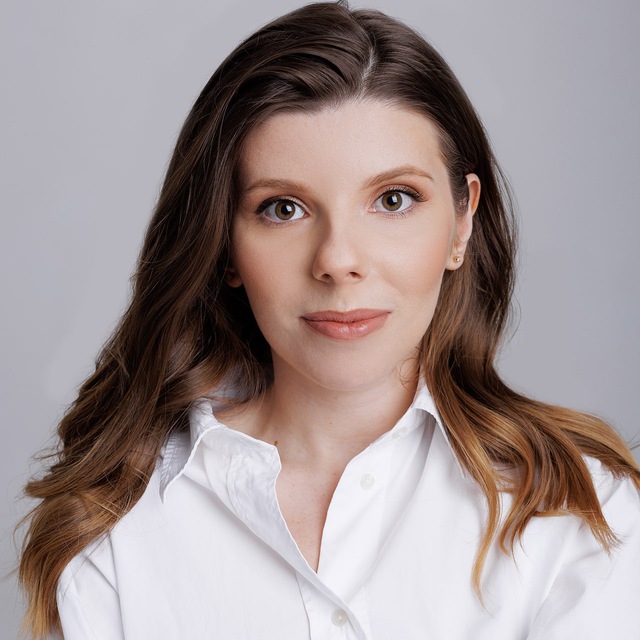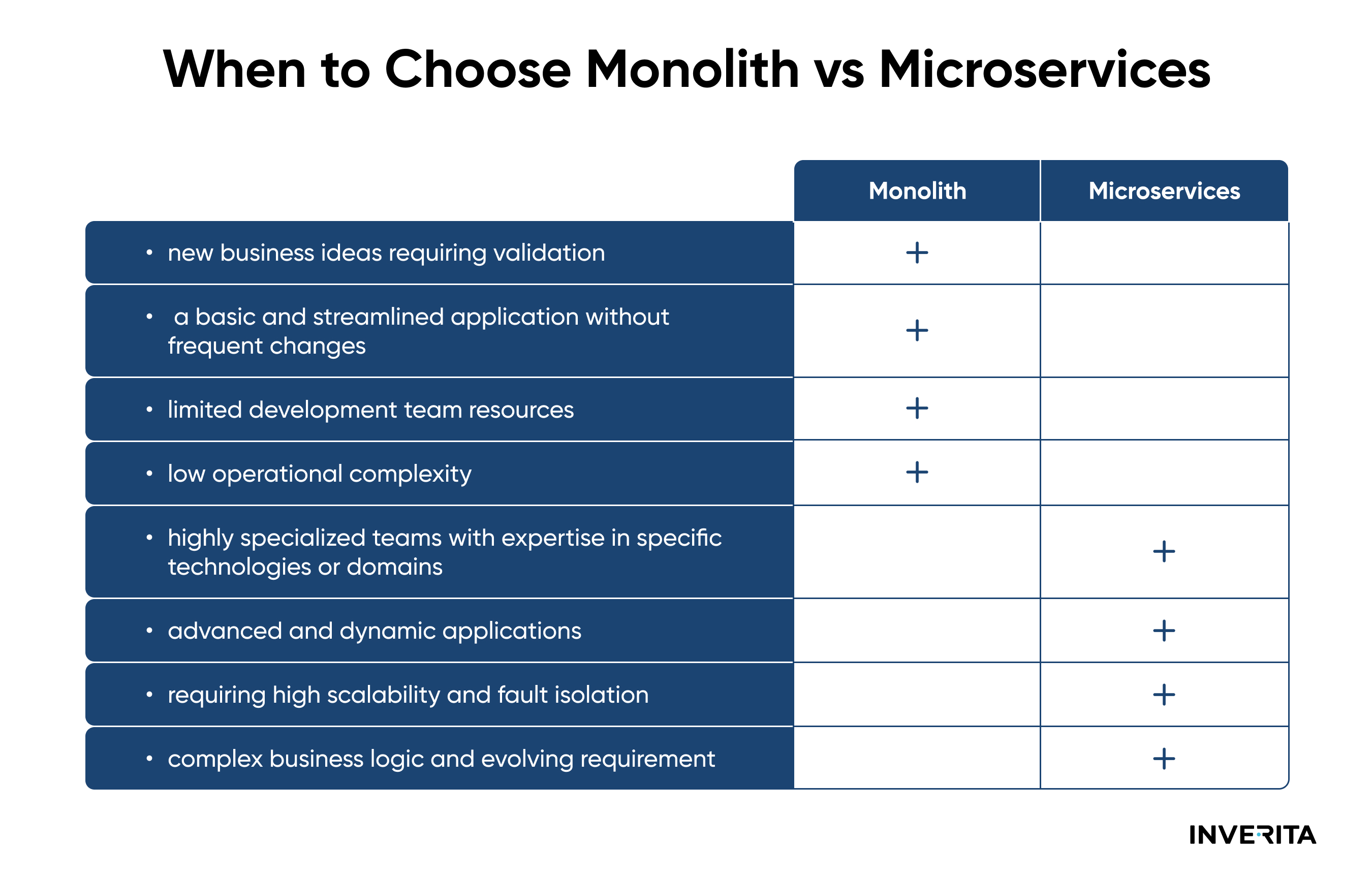Pros of Microservice Architecture
One of the biggest advantages of microservices over monolithic is that it’s compatible with distributed systems. In such systems, each software component receives its dedicated computing resources, enabling independent scaling according to present requirements and expected future demands. If you need an easily scalable application, the answer is definitely microservices.
- Freedom to Choose the Tech Stack
The technology used in each microservice can differ within the same application. Each microservice can be built and implemented using different technologies tailored to its specific needs. This offers more flexibility and adaptability, allowing the selection of the best-suited technologies for each microservice.
Microservices architecture offers better maintenance as all updates and changes can be made to individual services without affecting the entire system. Additionally, since each service is self-contained, it is easier to isolate and debug issues, leading to faster resolution of maintenance tasks.
Cons of Microservice Architecture
- Deployment and Testing Overhead
Deploying and testing changes across multiple services can be more time-consuming and resource-intensive compared to a monolithic architecture, as each service may have its own deployment pipeline and dependencies.
- Data Management Complexities
Handling data consistency and transactions across multiple services can be challenging in a microservices architecture, especially when dealing with distributed databases and cross-service transactions.
- Distributed System Challenges
Microservices introduce challenges related to network latency, communication overhead, and eventual consistency, which can impact system performance and reliability.
Monolithic vs Microservices: Key Differences
So, now let’s have a deeper look at the main difference between monolithic and microservices.
Development and Deployment
You can start building a monolithic application without hours of in-advance planning and add code modules in the development process wherever it’s needed. Comparing the deployment of monolithic vs microservices, monolithic apps are also simpler, as software developers install the entire application codebase and its dependencies into a single environment.
However, apps with monolithic architecture are more difficult to update and modify in the long run.
In contrast, the disadvantage of microservices architecture is that it requires a lot of planning up-front. Developers are required to identify various functions that can operate autonomously and design cohesive APIs. Deployment of such apps presents a greater challenge. Each microservice operates as a self-contained software package, requiring developers to containerize them before deployment. Containers encapsulate the microservice's code and dependencies, ensuring compatibility across different platforms.
Nevertheless, the initial coordination streamlines code maintenance significantly. This allows for quicker identification of bugs and implementation of changes. Over time, there is also a noticeable increase in code reusability
Scalability
Monolithic applications face several challenges as they scale within the context of monolithic vs microservices architecture. In a monolithic architecture, all functionalities are housed within a single code base, necessitating scaling of the entire application as needs evolve.
For instance, if a sudden surge in user activity causes the messaging feature of the application to slow down, scaling up resources would be necessary to address the issue. However, since all components are interconnected within the monolithic architecture, scaling up affects the entire application, even if other parts are not experiencing high demand. This leads to inefficient resource allocation and potential wastage.
Meanwhile, the microservices architecture supports distributed systems. In a distributed system, each software component is allocated its own computing resources. This allows for independent scaling based on current needs and anticipated demands.
For instance, additional resources can be directed towards a specific geographic location service without impacting the entire system. This flexibility in resource allocation is a key advantage of microservices architecture over monolithic architecture within the context of monolithic vs microservices architecture.
Technology Stack
In a monolithic architecture vs microservices, the technology stack typically consists of a single set of technologies used across the entire application. This includes frameworks, libraries, and tools for handling different aspects of the application, such as the frontend, backend, and database.
In contrast, in a microservices architecture, the technology stack can vary between various microservices within the same application. Each microservice can be developed and deployed using different technologies based on its specific requirements. This allows for greater flexibility and adaptability, as different technologies can be chosen to best suit the needs of each individual microservice.
Additionally, microservices often employ technologies that facilitate communication between services, such as RESTful APIs or message brokers, to ensure seamless interaction between components. This distributed nature of microservices often requires additional tooling and infrastructure to manage communication and coordination between services.
Debugging
In both microservices architecture vs monolithic architecture, debugging plays a crucial role in identifying coding errors causing erratic application behavior. In a monolithic setup, developers can easily trace data movement or analyze code behavior within the same programming environment, simplifying the debugging process.
Debugging microservice applications can pose significant challenges, as multiple developers may be responsible for numerous microservices. This often requires coordinated tests, discussions, and feedback among development teams, consuming more time and resources compared to debugging in a monolithic architecture.
Fault Isolation
In a monolithic architecture, fault isolation can be more challenging because all components are tightly coupled within a single codebase. A fault in one part of the software application can potentially impact the entire system, making it difficult to isolate and mitigate issues.
In contrast, in a microservices architecture, fault isolation is typically more effective due to the modular nature of the system. Each microservice operates independently, with its own codebase and runtime environment. This means that faults in one microservice are less likely to affect other parts of the system, making it easier to isolate and contain issues. Additionally, microservices often implement resilience patterns such as circuit breakers and fallback mechanisms to minimize the impact of failures and maintain system stability.
Monolith vs Microservices: Which Software Architecture is Best For Your Business
Both monolithic and microservices have a list of advantages.
With a monolithic architecture, development speed is a primary advantage, as it simplifies the process by consolidating the application into a single code base. Therefore, when deciding between microservices vs monolith, it's essential to consider that adopting a popular microservices approach isn't always the best fit for every scenario. Despite its declining popularity, a monolith still offers robust advantages that suit many use cases.











_1764586939-small.webp)